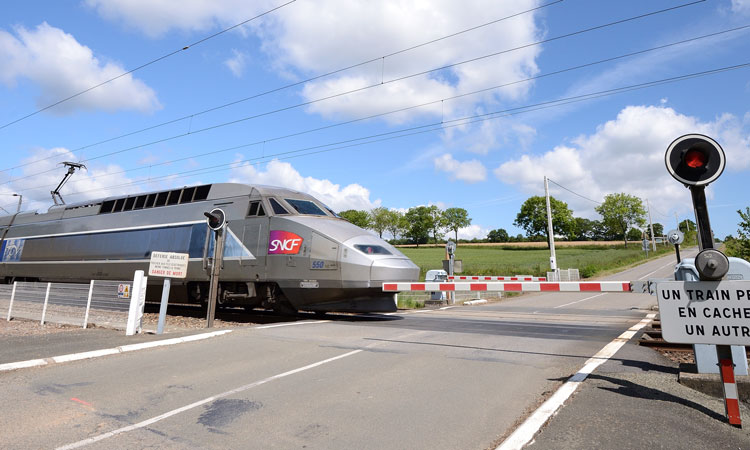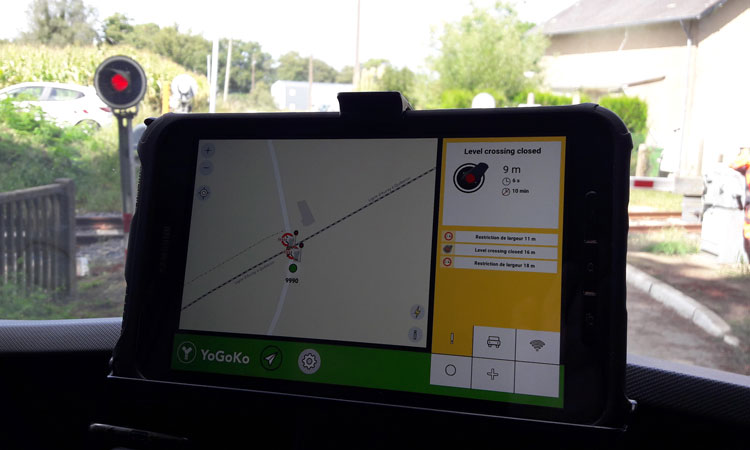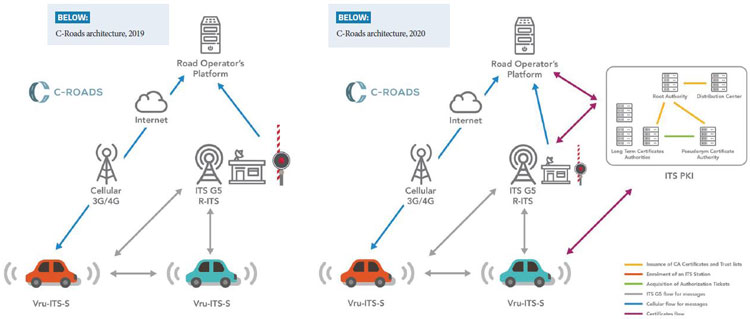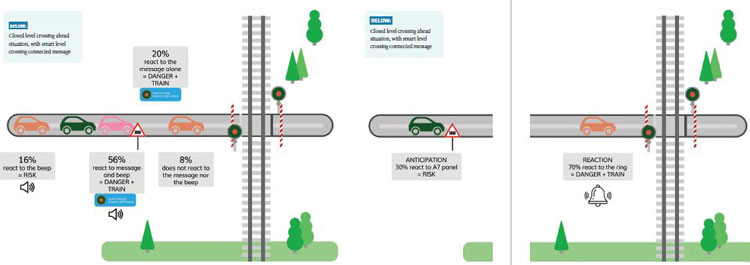Transforming level crossings into smart level crossings
Posted: 28 August 2020 | Gérard Hernja, Virginie Taillandier | No comments yet
Virginie Taillandier, Manager of SNCF’s Tech4Rail Level Crossing project, and Gérard Hernja, Training and Educational Research Coordinator at Ecole de Conduite Française (ECF), give details of how level crossings can be transformed into smart level crossings, improving safety for all users.


In France, the rail infrastructure managed by SNCF Réseau includes more than 15,400 level crossings on exploited lines, and accidents across those level crossings represent less than one per cent of the total number of road fatalities, but more than 37 per cent of railway fatalities (excluding suicide).
For 10 years, the number of collisions with a train per year has stagnated between 100 and 140, resulting in between 25 and 40 fatalities.
Ninety-nine per cent of accidents are due to non-compliance with the rules of the road, whether voluntary or involuntary. There are three types of causes of accidents: level crossing violation, driving error and distraction.
Different Cooperative-Intelligent Transport System (C-ITS) projects have emerged in France and throughout Europe to solve various problems, including the optimisation of road traffic in cities and the reduction of pollution. C-ITS projects are used today as a new way to enhance road safety. SNCF’s Innovation and Research department has established a field of technological developments that provide new solutions for the safety of level crossings. Transforming a level crossing into a smart level crossing – one that can communicate with connected vehicles – could reduce the number of collisions generated by inappropriate behaviour and distraction.
SNCF’s Innovation and Research department has developed multiple infrastructure-to-vehicle use cases, mainly:
- A level crossing sends information about its status to a vehicle, such as if it is open or closed, if it has a technical problem (such as broken barriers) or if the road is closed
- A level crossing sends its characteristics in regard to restrictions of width, height, weight, ground, speed and, in case of a problem, the level crossing sends a message to the road driver to notify them
- A vehicle can send distress information to a level crossing – for instance, that it has broken down within its location.


Smart level crossings can communicate with road users to alert them of level crossing status, which could help to reduce accidents.
In order to improve level crossing safety without making significant changes, the principle of operation of the level crossing is not modified. A control module monitors the state of the electrical relays and a set of algorithms enables knowing the state of the crossing. A transmission module connected to the control module makes it possible to make the level crossing communicate with third parties.
A prototype of a transmission system (or roadside unit) was designed in 2018 to be modular in terms of telecom technologies, but also to be able to interface with any existing or future remote monitoring systems. A set of algorithms allows a precise status of the level crossing in real time. In order to communicate with any type of connected vehicle, the system is designed to send messages both in ITS-G5 and LTE.
In parallel, SNCF signed a partnership with Valeo to test the system. SNCF equipped an Automatic Light System (ALS) level crossing with G5 and GPS antennas and the control and transmission modules. The level crossing broadcasts a message of its status (closed, open, out of order and work in progress) and, in addition, sends its localisation in G5 to the vehicle. The vehicle then displays different messages according its localisation and speed to help the road driver make the best decision.
SNCF obtained interesting results for this first demonstration, with more than 650m of range on straight roads and 250m of range on curved roads and with an obstacle (buildings and parked trains), and less than 300 mili-seconds of latency.
In 2019, SNCF joined in the Cooperative Roads (C-Roads) France project as an associate partner. C-Roads France is a contribution from France to the European C-Roads Platform, which combines feedback from national projects and foreshadows technical and functional developments and directions for future systems deployed across Europe. These projects are part of a coherent approach which also incorporates Directive 2010/40 and the delegated act.
SNCF integrated the European C-Roads architecture with hybrid communication which means, in addition to sending messages in ITS G5 to the vehicle, the level crossing sends a message in 4G through the national ITS station.


The tests realised in September 2019 have enabled:
- Different uses cases with status (as in 2018) and characteristics of level crossings (new messages if a level crossing has height, speed, width, weight or specific ground restrictions)
- Different types of G5 antennas with different configurations and their range for each
- Detection of a vehicle in distress at a level crossing area, and the level crossing is able to compare this information with its localisation and can send an alarm to the train or operator.
The tests were completed on an ALS level crossing in Brittany, with results showing that, in ITS G5, the configuration of the road was more difficult. With sharp curves and tree density, the range was only 280m on one side and 70m on the other side, and less than 300 mili-seconds of latency. In 4G, depending on the quality of the network, we could obtain up to 1km of range.
The security layer and requirements of the delegated act were integrated in SNCF’s prototype in June 2020 in order to validate it with tests planned for September 2020.


To measure the impact on road driver behaviour, SNCF worked with the Ecole de Conduite Française to launch a study with 25 participants, each taking course in a road simulator with three reference situations and six connected vehicle situations, followed by an interview. The interview was composed of questions regarding knowledge, behaviour and situations in the simulator around four categories: what they saw, what they thought when they saw it, what they did and what they understood.
During the simulator test, when messages are unequivocal – such as ‘closed level crossing’ – the messages allow the subjects to have clear indications on the status of the level crossing. They then cause an early slowdown. In this case, the rate of subjects with an anticipation profile is 92 per cent (compared to around more than a third of the ‘reference’ situation).
When they doubt, in particular with a lack of status of the level crossing (for example, the ‘level crossing in 200m’ message), the messages must be extended by reflection, with variable results, in relation to the ability to anticipate subjects. They are then less effective, even if they avoid the distraction phenomenon and are complementary to the A7 sign (LC announcement).
Eight per cent of participants are resistant to driving assistance devices and especially to screens (GPS, smartphone application, etc.), without this being linked to age. Therefore, they do not react to the messages they receive.
Today, mobility is an imperative for the development of the offer of any infrastructure manager (current mobility law bill).
The project on level crossings at the intersection of road and rail shows SNCF’s desire to create sustainable and secure mobility offers for all users. The construction of an interface between the road and the rail in the service of the human is, in this respect, an example of SNCF’s involvement in developing safer mobility for all users.












